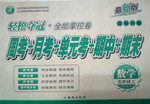题目内容
When something goes wrong,it can be very satisfying to say,”Well,it’s so-and-so’s fault.”or “I know I’m late,but it’s not my fault;the car broke down.”It is probably not your fault,but once you form the habit of blaming somebody or something else for a bad situation,you are a loser. You have no power and could do nothing that helps change the situation. However,you can have great power over what happens to you if you stop focusing on whom to blame and start focusing on how to remedy the situation. This is the winner’s key to success.
Winners are great at overcoming problems. For example, if you were late because your car broke down, maybe you need to have your car examined more regularly. Or, you might start to carry along with you the useful phone numbers, so you could call for help when in need. For another example, if your colleague causes you problems on the job for lack of responsibility or ability, find ways of dealing with his irresponsibility or inability rather than simply blame the person. Ask to work with a different person, or don’t rely on the person. You should accept that the person. Ask to work with a different person, or don’t rely on this person. You should accept that the person is not reliable and find creative ways to work successfully regardless of how your colleague fails to do his job well.
This is what being a winner is all about—creatively using your skills and talents so that you are successful no matter what happens. Winners don’t have fewer problems in their lives; they have just as many difficult situations to face as anybody else. They are just better at seeing those problems as challenges and opportunities to develop their own talents. So, stop focusing on “whose fault it is.” Once you are confident about your power over bad situations, problems are just stepping stop on for success.
1. According to the passage, winners__________
A. deal with problems rather than blame others
B. meet with fewer difficulties in their lives
C. have responsible and able colleagues
D. blame themselves rather that others
2.The underlined word remedy in Paragraph 1 is closest in meaning to__________.
A. avoid B. accept C. improve D. consider
3.When your colleague brings about a problem, you should__________.
A. find a better way to handle the problem
B. blame him for his lack of responsibility
C. tell him to find the cause of the problem
D. ask a more able colleague for help
4. When problems occur, winners take them as__________
A. excuses for their failures
B. barriers to greater power
C. challenges to their colleagues
D.chances for self-development
5. Which of the following is the best title for the passage?
A. A Winner’s Secret. B. A Winner’s Problem.
C. A Winner’s Opportunity. D. A Winner’s Achievement.
【小题1】A
【小题2】C
【小题3】A
【小题4】D
【小题5】A
解析:
【语篇解读】本篇文章为议论文。作者运用人们常用的两个借口为例——汽车故障了和这是同事的错,说明应该如何解决问题,而不应推卸责任。只有那些把问题看作是高自己能力的挑战和机遇的人才可能取得成功。
【小题1】细节理解题。根据第二段如何解决迟到和同事惹下麻烦的例子中可以看出,胜利者并非遇到的困难少一些,或是他们的同事个个能干负责,也不是自怨自艾的人,而是努力面对问题,想法解决问题的人。故选A。
【小题2】词义理解题。根据上下文,失败者一味指责别人,长此以往,就会变得软弱无能,无法改变不利形势。相反,如果你不再关注应该指责谁,而是关注如何“改进”这一现状,你就会对所发生的事情有掌控的能力。因此,此题的C项为正确答案。
【小题3】细节理解题。根据第二段第四、五句“find ways of dealing with his irresponsibility or inability rather than simply blame the person. Ask to work with a different person, or don't rely on this person.”可知应该积极想办法解决问题,故选A项。
【小题4】细节理解题。根据文章第三段第三句They are just better at seeing those problems as challenges and opportunities to develop their own talents.”可知他们是把困难看作自我提高的机会的,故选D项。
【小题5】主旨大意题。根据第一段最后一句“This is the winner's key to success.”可知这篇文章是揭密胜利者成功的秘密的。

 轻松夺冠全能掌控卷系列答案
轻松夺冠全能掌控卷系列答案